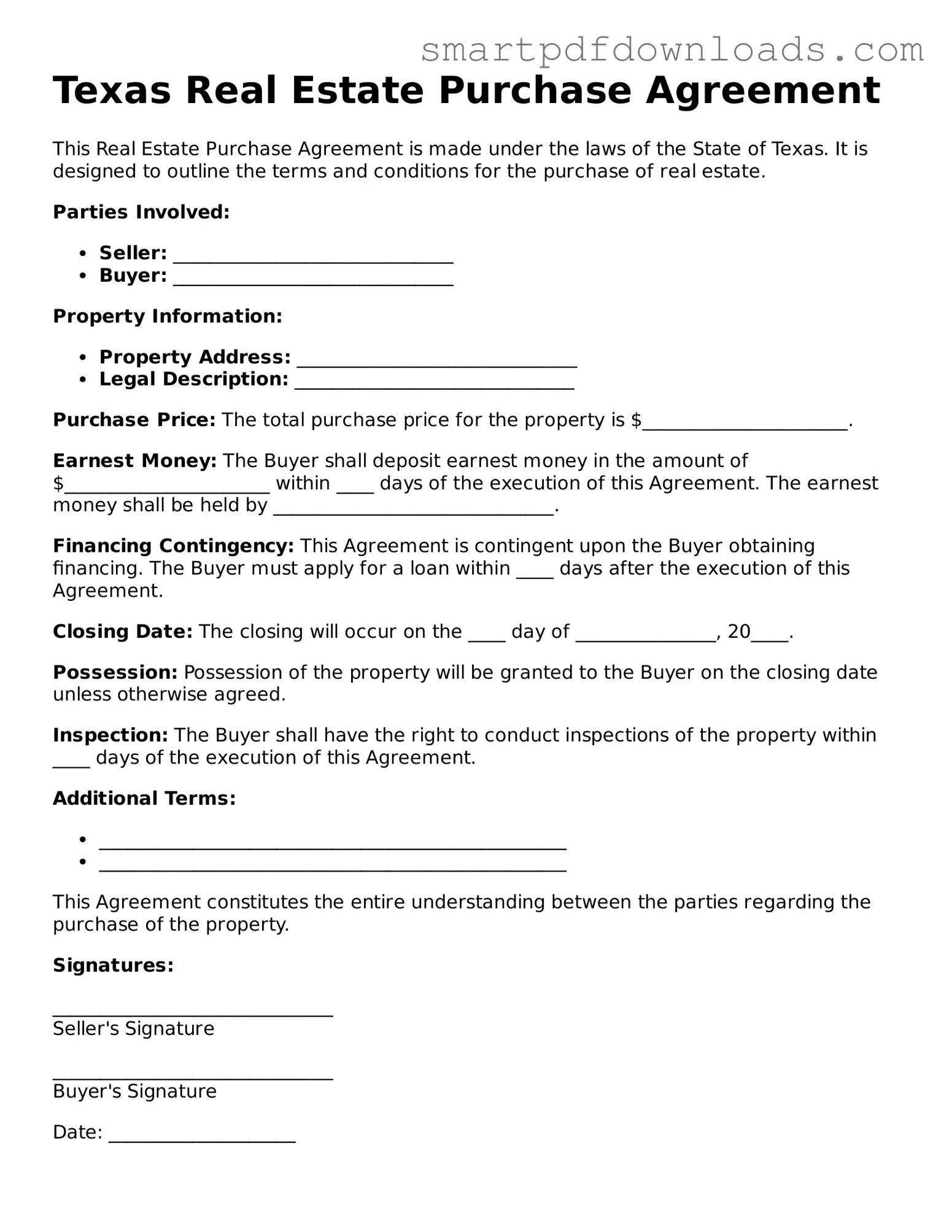Texas Real Estate Purchase Agreement
This Real Estate Purchase Agreement is made under the laws of the State of Texas. It is designed to outline the terms and conditions for the purchase of real estate.
Parties Involved:
- Seller: ______________________________
- Buyer: ______________________________
Property Information:
- Property Address: ______________________________
- Legal Description: ______________________________
Purchase Price: The total purchase price for the property is $______________________.
Earnest Money: The Buyer shall deposit earnest money in the amount of $______________________ within ____ days of the execution of this Agreement. The earnest money shall be held by ______________________________.
Financing Contingency: This Agreement is contingent upon the Buyer obtaining financing. The Buyer must apply for a loan within ____ days after the execution of this Agreement.
Closing Date: The closing will occur on the ____ day of _______________, 20____.
Possession: Possession of the property will be granted to the Buyer on the closing date unless otherwise agreed.
Inspection: The Buyer shall have the right to conduct inspections of the property within ____ days of the execution of this Agreement.
Additional Terms:
- __________________________________________________
- __________________________________________________
This Agreement constitutes the entire understanding between the parties regarding the purchase of the property.
Signatures:
______________________________
Seller's Signature
______________________________
Buyer's Signature
Date: ____________________
